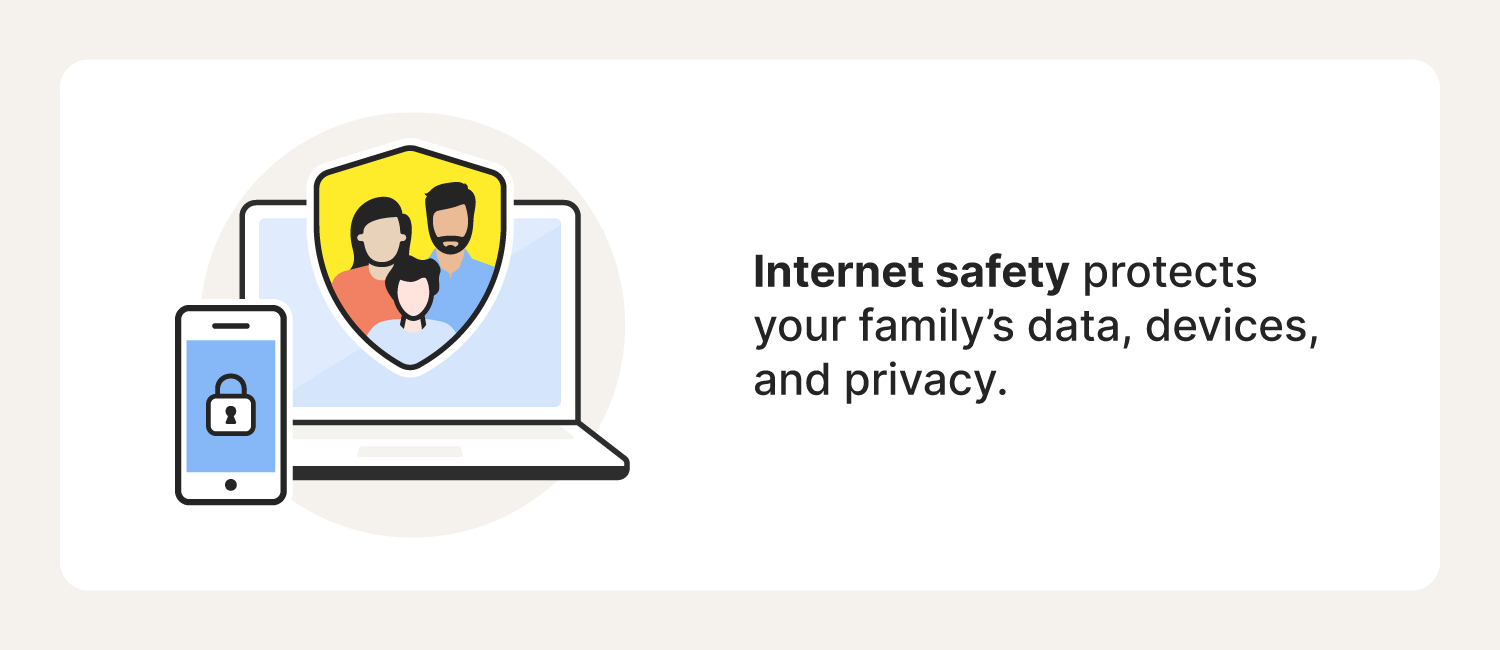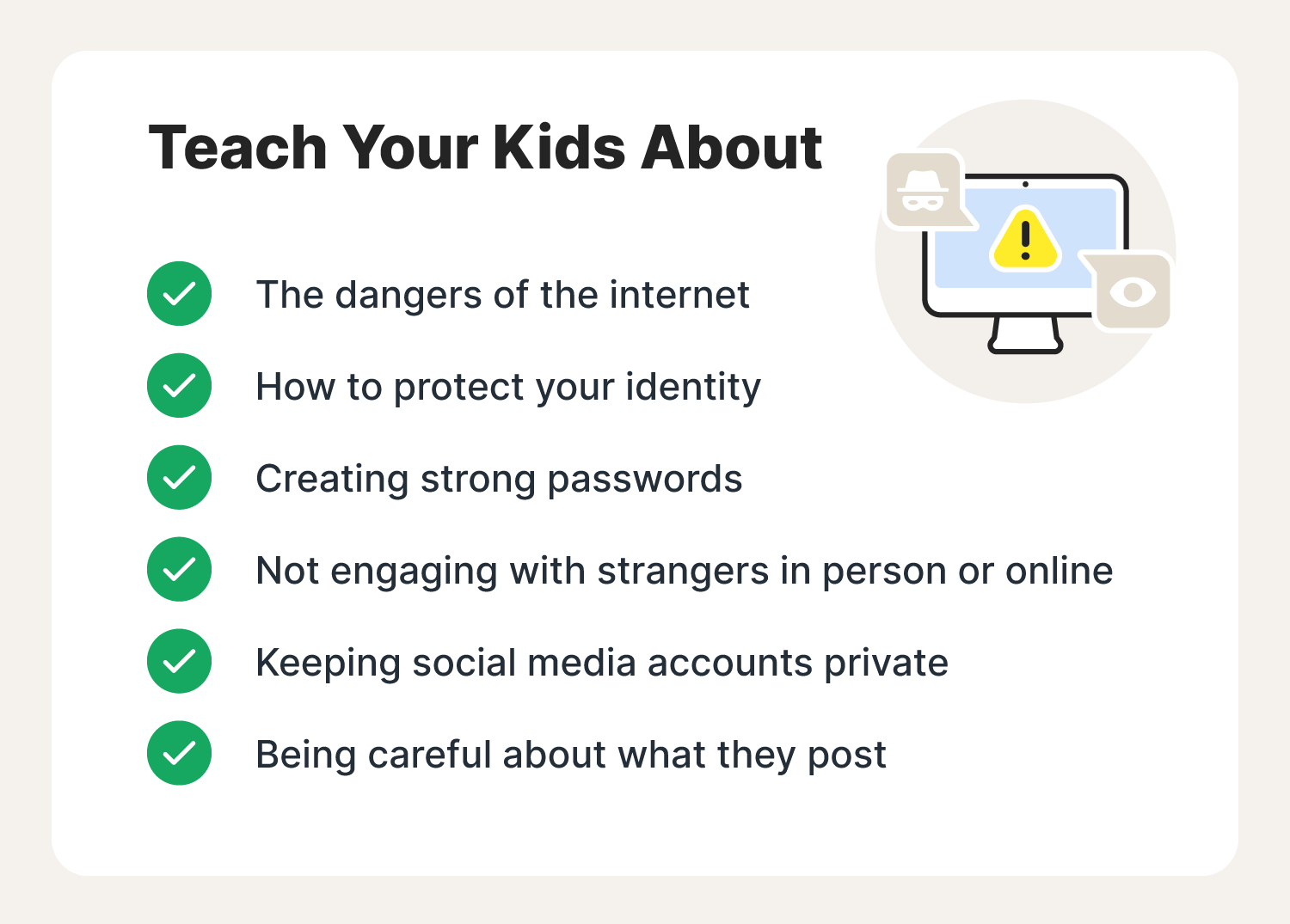
While the internet brings a wealth of information, it can distract and even harm us and the people we love. These internet safety tips for kids—along with the ability to track their devices and searches with Norton Family—can help make their time on the internet safer.


Kids have more information at their fingertips than ever before. Tablets, laptops, and smartphones are commonly used for gaming, social media, and even schoolwork. These devices aren’t going away—neither are the cybercriminals who want to scam, damage, and steal from normal people. That’s why families should have regular conversations about internet safety.
Living in a connected world doesn’t have to be terrifying. The bad guys may be smart, but you and your kids can be smarter. Use these internet safety tips and the internet safety checklist to keep your whole family safer online.
Internet safety is the act of staying safe online. It means being aware of the risks associated with your online activity and employing strategies to prevent, reduce, or avoid them.
The federal government has laws, like the Children’s Online Privacy Protection Act (COPPA), to protect kids when online. COPPA applies to children younger than 13 and requires websites and games to explain their privacy policies and get parental consent before collecting or using a child's personal information.

There are many Cyber Safety tips parents should know, but digital safety doesn’t stop there. Every family member has to play their part in creating a cyber-safe household.
Even if you already know this information, kids are becoming digital citizens at a young age, whether they’re learning virtually, watching videos, or playing games. So, it’s never too early to acquaint them with internet safety.

When it comes to cybersecurity, kids are often one of your family’s weakest links, because they usually don’t understand the dangers of the internet. While you don’t need to get into all of the specifics of online predators, teaching them to recognize the sources of malware and avoid suspicious activity are important first steps to keeping them safe.
Because recognizing danger is an ongoing process, encourage them to ask for help if something seems unusual. If they know you’re there, they may be more likely to seek you out when they have questions.
Bonus tip: Don’t try to cram every possible danger of the internet into a single conversation. Instead, as your kids earn more freedom online, expand your discussion to include things to look out for specifically related to new privileges.
People make themselves vulnerable to identity theft by disclosing personal information online because they believe they have nothing to lose. Scammers can trick people into disclosing their Social Security number and other details that they can use to commit identity theft. A child’s identity can have as much value as an adult’s identity.
Passwords are the primary defense against hackers. Yet many people reuse the same password for multiple accounts and use passwords that are easy to remember and therefore also easy to guess.
Teach your kids to create a hack-proof password by never using common words, phrases, or personal information like a phone number or family members’ names. Teach them to create a combination of at least 12 characters, including:
Bonus tip: Setting up a shared password manager can help you and your kids create and store better passwords safely.